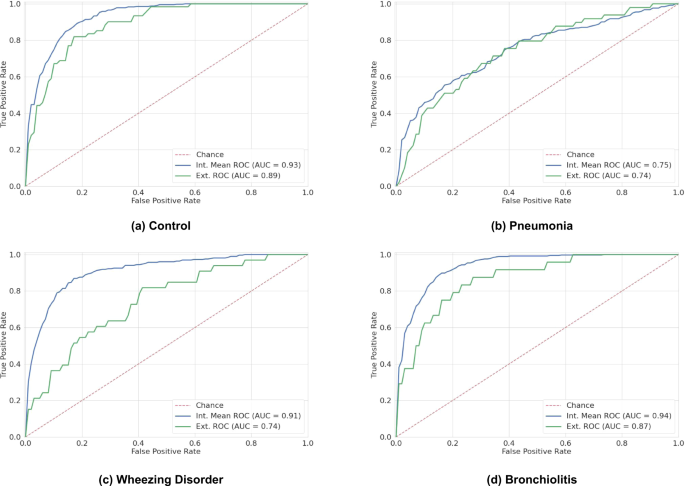2023-06-12 スイス連邦工科大学ローザンヌ校(EPFL)
◆EPFLの研究チームが開発したAIアルゴリズム「DeepBreath」は、呼吸器疾患の自動診断における可能性を示しています。この研究では、スイス、ブラジル、セネガル、カメルーン、モロッコの5カ国で、600人以上の小児外来患者を対象に呼吸音を収集し、AIアルゴリズムの訓練と検証が行われました。この研究は、呼吸器疾患の診断と管理における画期的な革新であり、特に資源が限られた地域や遠隔地での利用に大きな潜在能力を持っています。
◆今後は、より多くのデータを用いた検証を行い、Pneumoscopeというインテリジェントな聴診器と統合されたDeepBreathアルゴリズムの実世界での利用に向けて準備が進められます。
<関連情報>
- https://actu.epfl.ch/news/deepbreath-using-deep-learning-to-identify-respi-2/
- https://www.nature.com/articles/s41746-023-00838-3
DeepBreath-5カ国の小児科外来患者572人を対象に、肺の聴診から呼吸器系の病態を自動で検出 DeepBreath—automated detection of respiratory pathology from lung auscultation in 572 pediatric outpatients across 5 countries
Julien Heitmann,Alban Glangetas,Jonathan Doenz,Juliane Dervaux,Deeksha M. Shama,Daniel Hinjos Garcia,Mohamed Rida Benissa,Aymeric Cantais,Alexandre Perez,Daniel Müller,Tatjana Chavdarova,Isabelle Ruchonnet-Metrailler,Johan N. Siebert,Laurence Lacroix,Martin Jaggi,Alain Gervaix,Mary-Anne Hartley & with the Pneumoscope Study Group
npj Digital Medicine Published:02 June 2023
DOI:https://doi.org/10.1038/s41746-023-00838-3

Abstract
The interpretation of lung auscultation is highly subjective and relies on non-specific nomenclature. Computer-aided analysis has the potential to better standardize and automate evaluation. We used 35.9 hours of auscultation audio from 572 pediatric outpatients to develop DeepBreath : a deep learning model identifying the audible signatures of acute respiratory illness in children. It comprises a convolutional neural network followed by a logistic regression classifier, aggregating estimates on recordings from eight thoracic sites into a single prediction at the patient-level. Patients were either healthy controls (29%) or had one of three acute respiratory illnesses (71%) including pneumonia, wheezing disorders (bronchitis/asthma), and bronchiolitis). To ensure objective estimates on model generalisability, DeepBreath is trained on patients from two countries (Switzerland, Brazil), and results are reported on an internal 5-fold cross-validation as well as externally validated (extval) on three other countries (Senegal, Cameroon, Morocco). DeepBreath differentiated healthy and pathological breathing with an Area Under the Receiver-Operator Characteristic (AUROC) of 0.93 (standard deviation [SD] ± 0.01 on internal validation). Similarly promising results were obtained for pneumonia (AUROC 0.75 ± 0.10), wheezing disorders (AUROC 0.91 ± 0.03), and bronchiolitis (AUROC 0.94 ± 0.02). Extval AUROCs were 0.89, 0.74, 0.74 and 0.87 respectively. All either matched or were significant improvements on a clinical baseline model using age and respiratory rate. Temporal attention showed clear alignment between model prediction and independently annotated respiratory cycles, providing evidence that DeepBreath extracts physiologically meaningful representations. DeepBreath provides a framework for interpretable deep learning to identify the objective audio signatures of respiratory pathology.

